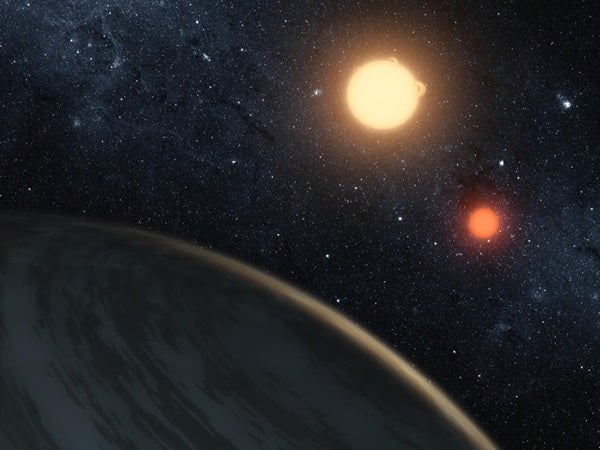This is the first instance of astronomers finding direct evidence of a so-called circumbinary planet. A few other planets have been suspected of orbiting around both members of a dual-star system, but the transits of the circumbinary planet have never been detected previously.
The team, led by Laurance Doyle from the Carl Sagan Center for the Study of Life in the Universe at the SETI Institute in Mountain View, California, used photometric data from NASA’s Kepler space telescope, which monitors the brightness of 155,000 stars.
They found the binary star system by detecting a system where the stars eclipsed each other from the perspective of the Kepler spacecraft. These stars have two eclipses: a primary eclipse when the larger star is partially blocked by the smaller star, and a secondary eclipse where the smaller star is fully blocked by the larger star.
But the researchers also noticed other times when the brightness of the two stars dropped, even when they were not in an eclipse position. This pattern suggested that there was likely a third object involved. The fact that these so-called tertiary and quaternary eclipses recurred after varying intervals of time, and of different depths, indicated that the stars were in different positions in their orbit at each instance. This result showed that the tertiary and quaternary eclipses were being caused by something circling both stars, and not an object circling one or the other star.
Measurements of the variations in the timing of all four types of eclipses, resulting from the mutual gravitational interactions of the two stars and the third body, demonstrated that the third object was, indeed, a planet. The astronomers’ work indicates that the planet is less massive than Jupiter, possibly comparable in mass to Saturn, and that the larger of the two binary stars is smaller than our Sun.
“This discovery is stunning,” Boss said. “Once again, what used to be science fiction has turned into reality.”










